
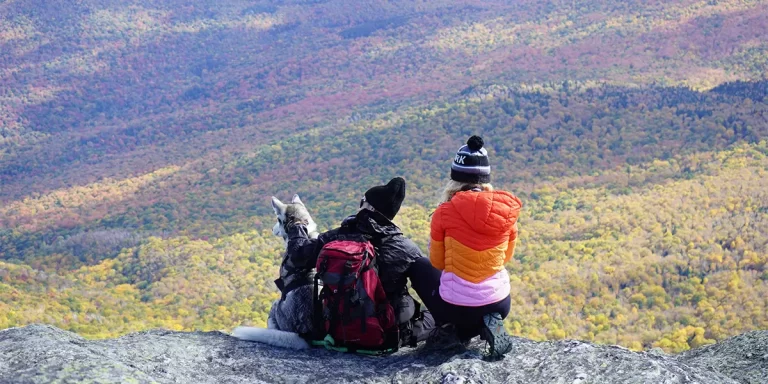
Backpacking in Vermont offers an opportunity to immerse yourself in the magnificent natural beauty of the “Green Mountain State.”
From the rugged peaks of the Green Mountains to the tranquil valleys dotted with picturesque towns, Vermont beckons adventurers to explore its diverse landscapes.
And this is what this post is about – we’ll share essential tips and the top 5 multi-day trails in Vermont, catering to both seasoned backpackers and those eager to embark on their next wilderness adventure.
Interested? Let’s get started.
Discover the most stunning long trails in Vermont for amazing adventures:
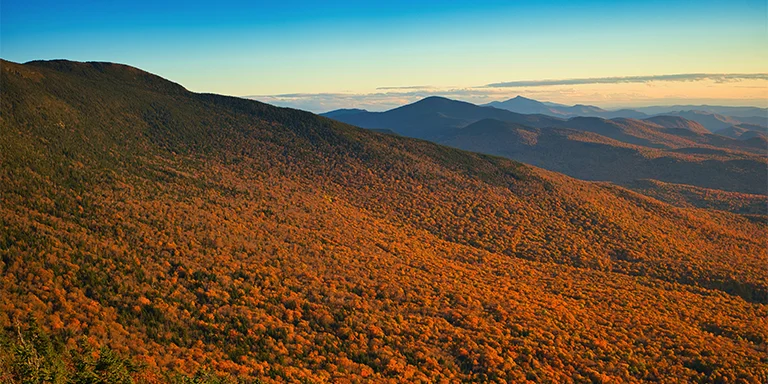
Length: 245.6 mi / 395.3 km
Type: Point to point
Difficulty: Hard
Elevation Gain: 65 370 ft / 19 925 m
Location: Green Mountain National Forest
Estimated Hiking Calorie Burn: 32 300 calories
More Details: See on AllTrails
The Long Trail is an epic 245.6-mile hiking trail through the Green Mountains of Vermont, running from Massachusetts to Canada. This historic trail winds through remote ponds, rocky peaks, lush forests, and offers breathtaking vistas. Backpackers can stay at shelters along the way or camp at scenic spots like Bully Brook. Conquering the entire challenging Long Trail is considered a classic Vermont adventure with its diverse and beautiful terrain.

Length: 26.7 mi / 43 km
Type: Out and back
Difficulty: Hard
Elevation Gain: 8372 ft / 2552 m
Location: Mount Mansfield State Forest
Estimated Hiking Calorie Burn: 3640 calories
More Details: See on AllTrails
The extremely challenging 26.7-mile out-and-back Smugglers’ Notch section of Vermont’s Long Trail winds along steep, rocky ridges through alpine meadows, over streams, and features the dramatic Notch rock formation, requiring backpackers to be prepared for rugged terrain and quickly changing weather as they experience this epic hiking adventure with incredible views.
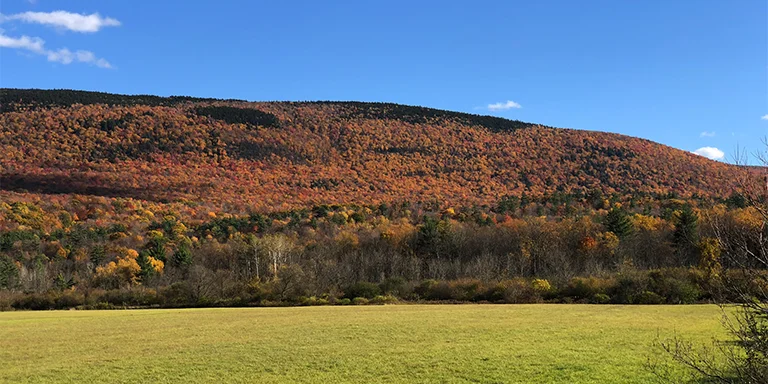
Famartin, CC BY-SA 4.0, via Wikimedia Commons
Length: 28.7 mi / 46.2 km
Type: Point to point
Difficulty: Hard
Elevation Gain: 5866 ft / 1788 m
Location: Green Mountain National Forest
Estimated Hiking Calorie Burn: 3600 calories
More Details: See on AllTrails
The 28.7-mile Middlebury Gap to Route 4 section of Vermont’s Long Trail is a challenging point-to-point route. Starting from meadows at Middlebury Gap, it climbs to the heights of Brandon Gap, passing cliffs with panoramic views. The trail traverses the ridgeline of the Green Mountains, with backcountry shelters along the way. From wooded valleys to alpine vistas, this stretch allows hikers to experience the beauty and solitude.
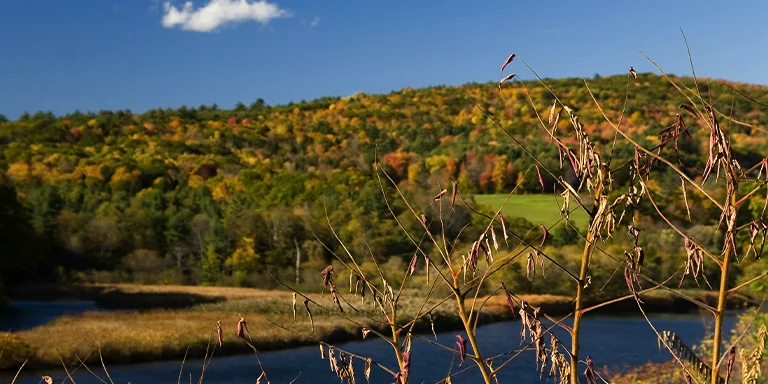
Length: 95.5 mi / 153.7 km
Type: Point to point
Difficulty: Hard
Elevation Gain: 3211 ft / 979 m
Location: Swanton
Estimated Hiking Calorie Burn: 13 300 calories
More Details: See on AllTrails
The Lamoille Valley Rail Trail is a 95.5-mile easy point-to-point trail near Swanton, Vermont perfect for hiking, biking, horseback riding, and cross-country skiing. This flat, scenic trail follows the path of a former railroad, connecting Swanton on Lake Champlain to St. Johnsbury. Passing through tunnels and alongside the Lamoille River, it offers beautiful views of mountains, countryside, and small towns. Its length and relatively gentle terrain make it a great trail.
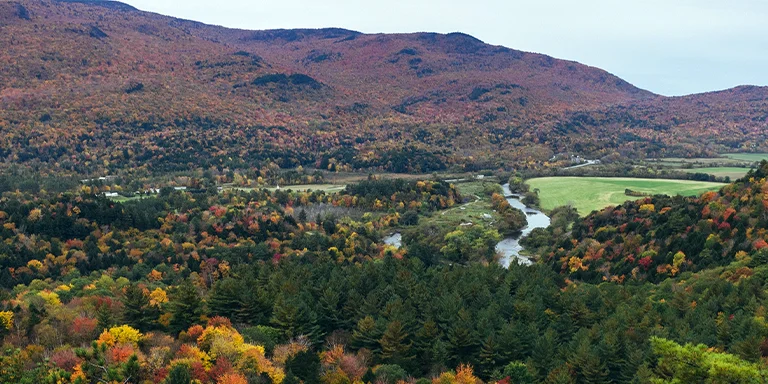
Photo by Scott McCracken, flickr via CC BY 2.0
Length: 25.9 mi / 41.7 km
Type: Point to point
Difficulty: Hard
Elevation Gain: 7808 ft / 2380 m
Location: Northern Vermont
Estimated Hiking Calorie Burn: 3500 calories
More Details: See on Hiking Project
This 26 mile point-to-point portion of the Long Trail in Vermont traverses over hills and across rivers, climbing from the Lamoille Valley Rail Trail up to Laraway Mountain. It passes Prospect Rock and the scenic Roundtop Shelter before reaching Devil’s Gulch, a narrow rock canyon. After a steep climb to the fire tower on Belvidere Mountain, the trail ends at Tillotson Camp, offering outstanding vistas and diverse terrain along the way.
Weather conditions can vary widely depending on the time of year and the specific region within Vermont. Here’s a general overview:
Before making your gear selection, take a look at the weather statistics for Vermont (Montpelier):
| Jan | Feb | Mar | Apr | May | Jun | Jul | Aug | Sep | Oct | Nov | Dec | |
|---|---|---|---|---|---|---|---|---|---|---|---|---|
| High °F | 27 | 30 | 39 | 54 | 66 | 74 | 78 | 76 | 68 | 56 | 43 | 32 |
| Low °F | 11 | 13 | 22 | 35 | 45 | 54 | 59 | 57 | 49 | 39 | 29 | 18 |
| Rain/Snow (D*) | 7 | 6 | 8 | 9 | 11 | 12 | 13 | 11 | 10 | 9 | 8 | 8 |
Not sure if Vermont is right for you?
Don’t forget to check out our backpacking guides for New Hampshire and Massachusetts.
When backpacking in Vermont, campfires are strict. No fires above 2,500 feet, and only in established rings below that. Get a permit first. Only use dead wood. Cook with portable stoves, not fires. Be cautious, as fires might attract bears.
When you backpack in Vermont, get ready for changing mountain weather, remote areas, wildlife, and tough trails. Bring maps, a compass, and GPS to navigate primitive and uneven paths. Pack extra layers, food, and a headlamp. Always hike with a buddy and let someone know your plans. Look out for signs of bears, moose, and deer. Avoid hiking during hunting seasons. Use a water filter to avoid giardia in streams. Be careful around steep edges and avalanche-prone slopes. Check the forecast, and head back if storms are coming. Know your limits on challenging high elevation hikes.
Be careful if you run into animals while backpacking in Vermont. Make some noise to avoid surprising bears or moose. Keep your distance and don’t try to get too close. Look for signs like tracks to avoid active areas. Know how to use bear spray just in case. For bears, make yourself look big, back away slowly, and speak firmly. If a moose charges, run behind a tree. Leave beavers, porcupines, and other small critters alone. Never feed wild animals. Tell rangers about any tricky encounters. Hike in groups, keep your food securely stored, and be extra careful at dawn and dusk when animals are active.
When preparing to explore the beautiful Vermont backcountry, backpackers should pack essential camping gear like a tent, sleeping bag, cookware, and plenty of layers to handle the variable weather. Don’t forget trail snacks, a first aid kit, compass, and rain gear. Check the latest conditions and pack accordingly. Arrive at the trailhead equipped with a sturdy backpack loaded with everything you need to fully experience the natural wonders along the trail during your outdoor adventure.